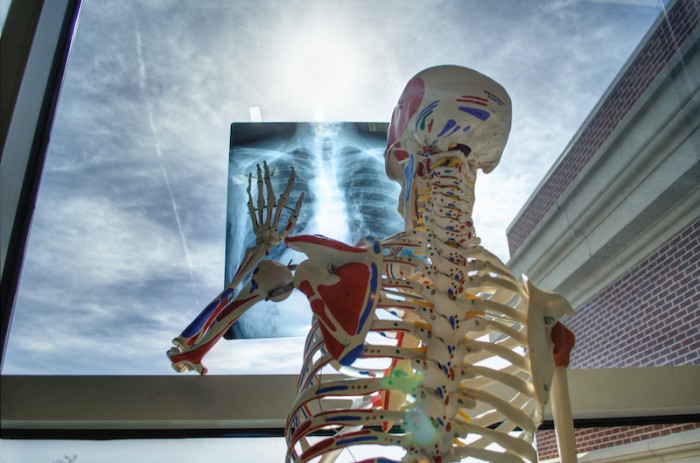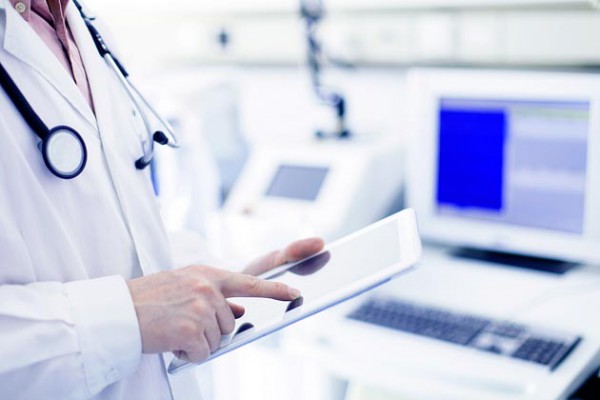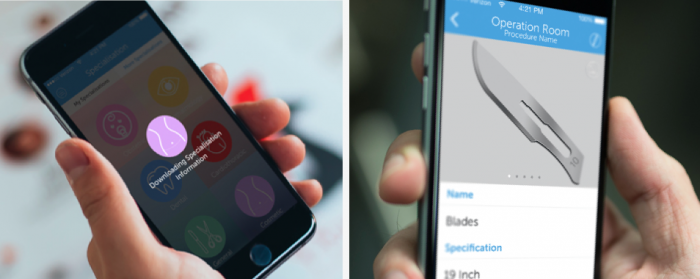Healthcare is constantly evolving, improving with new drugs, new procedures, new surgeries, and advances in preventative medicine.
But recently, there’s been a slightly different medical advancement – Mobile health, or mhealth. Based around better information sharing, more accurate transference of data with a greater focus on patient-led care with apps, portals, social media, and health content, it’s set to change how we all view and participate in our healthcare system. Here’s a summary of the major trends so you can stay on top of the mhealth movement.
1. More healthcare data and improved data flow

It’s big data. But with health.
For years there has been a problem in the healthcare industry with getting information quickly and efficiently to the specialists and departments where it’s needed. Each patient might have eight different specialists working their case at once, and each specialist needs the results, scans, and analysis of all the others as quickly as possible.
It’s been a nightmare.
So a big part of mhealth is focused on improving the flow of information both around medical institutions internally as well as between disparate organizations. A second tier of information flow is the movement of health records between whoever is paying for the healthcare (e.g. the government, the individual, or the insurance company) and the organizations treating the patient. While not as immediate, this information cycle is a further complicating factor, particularly with regards to privacy issues.
mhealth solutions

The core solution to this problem is an EHR or EMR, which stands for Electronic Health (or Medical) Record.
The easiest way to visualize this is to think of a file folder on a computer. Each patient gets their own file folder, and in goes all the notes, scans, results, and medical histories. EMRs can be accessed by any doctor for their relevant case – that way, each doctor simply opens the correct file folder and has all the information at their fingertips.
Usually EMRs are connected to
an enterprise app that a hospital (for example, Ottawa Hospital) will use internally with tablets, allowing doctors access to lots of information literally at their fingertips.
That’s not to say that EMRs are without problems though…
2. Privacy and security challenges
There are major issues, both technical and ethical, around the digitization of medical records in a large scale way, and the increasing access that professionals have.
The ethical concerns
Ethically, the problem boils down to
who really needs access to what health records?
This might seem like an easy question:
Doctors who are working on the patient? Yes.
Janitors who are cleaning the patient’s room? Not so much.
But in between these black and white examples is a vast grey area, particularly around support staff. Nurses, for example, need access to the health records in order to do their job. Receptionists, however, might only need access sometimes, in order to process billing and payments. Further, some tiers of healthcare support workers probably only need access to
some of the record, not all. And then there’s the issue of particularly sensitive parts of a file, like HIV or pregnancy test results.
So there are concerns from both doctors and patients over who has access, who needs access, and what that access looks like.
The technical concerns
But putting ethical worries aside for a minute, there are also problems with security from a technical perspective. Securing EHRs is relatively easy, and there are government regulations (HIPPA in the US) around those large, internal systems. While it might not be simple, it’s a challenge that’s been overcome before.
The real problem is mobile health apps on personal devices. With dozens of apps, four major software platforms (including BlackBerry), plus a host of other factors, security is real challenge.
One solution being used by the Seattle Children’s Hospital is a security waiver screen whenever someone logs on, similar to what you sometimes see when you sign on to free wifi. It installs software onto the device to encrypt the data and keep everything tight and secure.
But this sort of top-down institutional solution is only going to work for enterprise apps used by hospitals. There are plenty of apps in both the App Store and the Play Store that take potentially sensitive user data but fail to secure it correctly.
One study looked at the apps in the health sections of the App Store and the Play Store and found that 95% of apps present some risk of information leaks through security flaws. Basically, if you get a health app from the App Store or the Play Store, you run the risk of having your information being unsecured.
3. Mobile apps
What does all of this actually look like? There is a giant range of apps that are classed as mhealth apps, but the
Healthcare Information Management and Systems Society (HIMSS) reckons uses can be broken down into three main categories:
- Apps to improve communications between doctors and patients.
- Apps to track your health and manage conditions (think Apple Health).
- Apps to research and learn about a problem (think WebMD).
We looked at one of each.
Babylon - pocket doctor
Babylon Pocket Doctor is an app that connects people to doctors pretty much on demand. The free version includes free texting with a qualified doctors and activity trackers to monitor health, and paid versions get you video consultations and (depending on your country) you can book a visit with a doctor. You can also order test kits to your home.
We’ve highlighted Babylon but this sort of mhealth app is indicative of the category – apps that help you either become your own doctor or get access to a doctor faster and more efficiently than before. While you’re still going to have to go in to get a heart transplant, they exist more to help put you at ease. For example, you might have a rash or something that you want to get checked out just to reassure yourself that it’s fine. This breed of mhealth app lets you do that, quickly and easily.
BlueStar
 BlueStar
BlueStar is an app designed to help people living with Type 2 diabetes manage their condition. It’s designed to let patients have more access and control over their own illness while also keeping their doctors up to date with real-time sharing. It comes with all sorts of features, like automatic reminders, motivational messages, and lots of statistical tracking power.
This app nicely demonstrates the second core function of mhealth apps – to make health easier to manage. It’s part of a broader movement in our health system, driven in part by health economics, to make patients more self-sufficient and play a much bigger role in their own healthcare.
With healthcare costs rising, if a patient is more self-sufficient – say with managing their own diabetes instead of going to the doctor – that’s now time the doctor can be doing something else that maybe can’t be managed through an app, like setting a broken arm.
ScrubUp
 ScrubUp
ScrubUp is an app for healthcare professionals rather than patients, but we still feel it fits the third category outlined by HIMSS. ScrubUp helps surgery nurses prep the surgical theatres for the procedures. It’s a compendium of hundreds of different procedures, with full documentation of what they’re going to need for each one. It also lets you take and store images, so if a particular surgeon prefers a particular tool, you can be ready for that preference.
It’s a simple idea, but one with tremendous value, and like other apps on the patient side of things, it helps keep highly specific information organized and easy to access.
[contextly_sidebar id="ZGRSz4rVyU5Vri6ab1Rcr9qxant6hRn7"]
Conclusion
mhealth is absolutely going to be a part of medicine going forward. It’s a way for doctors to streamline their services, and shift a significant amount of healthcare time and resource off the medical system and onto the patient. With worries over declining resources and spiralling demand, this is absolutely a driver in patient-led healthcare.
But mhealth is about more than just that.
It’s also a way for patients to take control of their own healthcare for their own gain, and for doctors to treat more patients, faster and more efficiently. Like all industries, there are improvements to be made through technology, and while healthcare presents unique challenges, they will undoubtedly be overcome through the infinite creativity of app developers.
